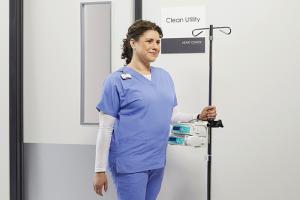Video security systems add variety of features

Hospitals and other health care facilities pose many challenges to manufacturers of video security systems. They are complex facilities that include many blind spots and places that users do not realize need coverage until after the installation has been completed. In addition, health care facilities are constantly evolving, and their camera systems must be able to change with building use.
However, health care facilities have been helped by the growth of technologies such as the Internet of Things (IoT), infrared cameras, image analytics, temperature monitoring and facial recognition, all of which are driving the development of hospital video security systems.
Assessing risk
It is critical to complete an overall risk assessment when selecting a video security system. Vital information discovered during this process often will dictate placement of cameras and the types of cameras that are necessary, according to David LaRose, principal in the enterprise security risk group at ADT Commercial, a Boca Raton, Fla.-based systems integrator. This process also can help stakeholders develop functional and technical requirements for the systems. “Engaging in this kind of thoughtful planning among key decision-makers — especially information technology and cybersecurity teams — will help define what success looks like.”
Regulations governing security and privacy in hospitals have made encryption of video and data even more important. Compliance requirements impact how video must be retained and for how long. “Security teams are deploying more cameras, resulting in significant amounts of video,” says Alex Asnovich, head of global marketing for video security and analytics at Motorola Solutions Inc., Chicago. “Storing all of this video has proven to be a complex challenge.”
Low light levels and too much light coming through large glass windows and doors pose another challenge. “Low light issues can be overcome by using infrared cameras or cameras with low-light technology, such as Bosch’s Starlight cameras,” says John Wekenborg, application design specialist for Bosch Security and Safety Systems LLC, Fairport, N.Y. “In areas with too much light, cameras with a high dynamic range rating between 120 and 130 decibels are needed.”
The growth of small, off-campus facilities is another factor with which vendors are dealing. Paul Baratta, segment development manager for health care at Axis Communications, Chelmsford, Mass., notes that facilities of different sizes have different needs. For instance, many clinics do not operate 24/7, so they require burglar alarms and motion sensors for their off hours.
“However, today’s video surveillance, coupled with analytics, can fulfill this need by turning on lights or sending alerts when any motion is detected,” Baratta says. “By using video and analytics as a replacement for a traditional alarm or motion sensor, smaller facilities are able to get the best possible return on investment for their technology.”
Baratta also sees a need from stand-alone buildings, including senior living facilities, for an end-to-end solution with an on-site video management system, access control, door stations, video, audio and analytics.
Johnson Controls, Milwaukee, offers the Tyco Cloudvue video surveillance system, which connects smaller health care facilities to a central network location, allowing them to access the same enhanced security systems as larger hospitals. It eliminates on-site servers and security network infrastructure and moves existing cameras to the cloud.
Schneider Electric, an Andover, Mass.-based systems integrator, offers the cloud-based EcoStruxure Access Expert, which integrates video monitoring, intrusion detection and alarms, visitor management, and building management operations from a simplified user interface. This allows security teams to operate with maximum efficiency at lower operating and maintenance cost.
Technology drivers
Analytics is one of the biggest developments in hospital video systems. Through the use of artificial intelligence and machine learning, video analytics can recognize behavioral patterns, reduce false alarms and identify security threats, enabling a more proactive approach. “For instance, if someone is loitering outside of an entryway, the system can alert a security guard, whether it’s a threat or someone having a health emergency,” says Walt Cunningham, strategic product manager for video systems at Johnson Controls.
The video market has been engaged in network-based deployments for decades, so the adoption of IoT-connected concepts and devices is a natural progression, according to Steven Turney, security program manager at Schneider Electric. “Many hospitals are starting to deploy analytical tools to improve their security operations teams’ effectiveness while empowering them to be mobile.” As a direct result of COVID-19, he adds, cameras and tools associated with temperature monitoring are being deployed. “However, we typically see them being deployed as stand-alone platforms, which are not integrated into the core facilities’ video systems.”
Intelligent video analytics help facilities and security departments manage their property. These tasks include traffic direction, people counting, fire exits blocked and illegal parking. Through integration with a public address or radio dispatch system, the analytics can trigger voice messages when a predefined event has been detected.
“The cameras can act as smart sensors connected to an intrusion panel,” Wekenborg says. “This takes motion detection to a whole new level. The cameras can report specific alarms to a panel and be trained to only report if the event was generated by an actual person, reducing nuisance alarms. Video analytics also provide the ability to perform crowd detection and people counting for occupancy control.”
Artificial intelligence and advanced neural networks are driving the development of new solutions that reach beyond traditional applications for video surveillance, according to Bill Brennan, president of Panasonic i-PRO Sensing Solutions Corporation of America, Rolling Meadows, Ill. “For example, i-PRO’s FacePRO facial recognition technology helps identify and authenticate individuals to control access and prevent abduction,” he says. “We also support HIPAA requirements with a redaction plug-in that blurs faces on recorded video to protect the privacy of hospital staff, patients and guests.”
As noted previously, facilities managers are finding new ways to utilize video and add advanced technologies to address COVID-19 concerns. One way is by using video-enhanced, visitor management solutions that include temperature screening via thermal cameras and face mask-detection analytics paired with electronic access control, according to Andy Weixler, technology solutions manager at Stanley Security, Fishers, Ind., a systems integrator and division of Stanley Black & Decker. “We’re also seeing more use of intelligent video analytics for monitoring occupancy counts and physical distancing guidelines in larger, open spaces.”
Baratta sees a growing need for electronic health records (EHRs) to be integrated with security solutions that allow clinicians to use video and audio for patient care and reduction of the use of personal protective equipment. “Today, video, audio and analytics can be used to monitor patients’ conditions and, through integration with EHRs, provide clinical staff with real-time observation of their condition.”
More innovations
Also introduced to the market, Johnson Controls has released a visual alarm verification (VAV) system to verify false alarms. “Let’s say a remote health care facility closes at 10 p.m. and its alarm is triggered at 11 p.m.,” Cunningham says. “The VAV system allows us to immediately share video of the incident with facilities managers by using text messaging; they can confirm if it’s an intruder or a staff member who went back to retrieve something. The incident can be resolved without ever having to actually go on-site, reducing expensive false alarms.”
Security and Safety Things, a Munich-based company that works with Bosch, has developed an open platform for video security cameras that allows apps to be loaded onto the cameras. As a result, cameras are transformed into intelligent sensors and can be taught to recognize and report on specific scenarios, according to Wekenborg. “The opportunities to use this technology to improve patient flow and the patient experience are endless,” he says. “Bosch has just introduced its first cameras built on this open platform concept.”
A camera trainer based on machine learning technology is a valuable feature of Bosch IP cameras used in hospitals and clinics. The cameras can be taught to look for specific scenarios, such as mask wearing, social distancing, and number of people in a room or length of time a crowd has been in an area. The cameras also can detect a person who has fallen or climbed out of bed, the number of times a person got up and the time of day they got up, and length of time it takes a caregiver to get to a room.
Merit Lilin USA Corp., Arcadia, Calif., has introduced the NAV Facial Recognition Recorder, which can identify and record up to 10,000 faces. The device can alert health facilities managers and prevent unauthorized guests from entering the hospital, at certain doors and at certain times. The recorder can be customized so that, for example, the guest visit is limited from 8 a.m. to 8 p.m. It can be triggered to let all registered visitors enter during that time, while all registered staff (e.g., doctors and nurses) can enter anytime.
“The facial recognition recorder also serves an operational purpose so that all staff, patients and guests can be traced by their entering and exiting times,” says Forest Liu, general manager. “In addition, it can be used with a mask detection server to check if a person is wearing a mask or not, which is especially important during the current pandemic.”
Audio solutions, such as the AXIS C1410 Network Mini Speaker from Axis Communications, offer many benefits to the health care field. “The all-in-one unit means there is no need for a separate power amplifier or signal processor,” Baratta says. “It supports both clear, prerecorded messages or live speak, allowing for health care personnel to respond in real time without having to be face-to-face.” Additional features include remote health testing, passive infrared sensor for motion detection and simple installation with Power-over-Ethernet.
The Pelco Advanced Analytics Suite from Motorola Solutions is an artificial intelligence-powered analytics technology that automates and improves threat detection, so security staff can respond to actual threats instead of false alarms. The suite features automated people and vehicle counting, in-zone detection and counter-flow movement detection.
Pelco cameras from Motorola Solutions deliver high image quality, exact color reproduction and wide dynamic range, even in low lighting situations. They’re ideal for deterring and detecting theft, vandalism or unauthorized movement across the entire health care campus, while allowing administrators to monitor employees’ adherence to COVID-19 rules, industry regulations and other compliance measures.
In fact, Motorola Solutions has introduced a number of pandemic-response solutions designed to help mitigate the virus by supporting face mask compliance, elevated skin temperature detection, contact tracing and rapid isolation. These analytics can be customized to meet individual hospital needs.
Looking ahead
Fawn Staerkel, director of health care strategic accounts at Johnson Controls, sees analytics becoming even more popular. “It used to be very expensive, and you had to have large servers in a back room with lots of power,” she says. “Now, that power is found in a small camera on the edge, connected to powerful minicomputers.”
The data analytics of these solutions can help hospitals control foot traffic flow, Staerkel adds. For instance, it can help determine where bottlenecks are occurring and why, allowing hospitals to identify new ways to redirect people and create more efficient movement.
LaRose of ADT Commercial also sees continued development of the analytics capabilities of hospital video security systems. “These systems may soon act as visitor management solutions, allowing patients or staff to walk up to an access point, be recognized and obtain a badge to accommodate their specific level of authorization.”
Neal Lorenzi is a freelance writer and regular contributor based in Mundelein, Ill.
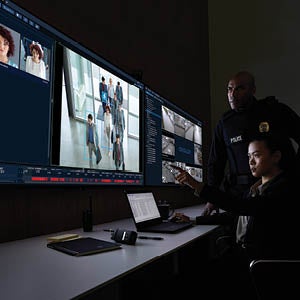
ALWAYS WATCHING
The Avigilon Control Center offers a wide range of security applications and can detect whether individuals are wearing face masks.
Motorola Solutions Inc.
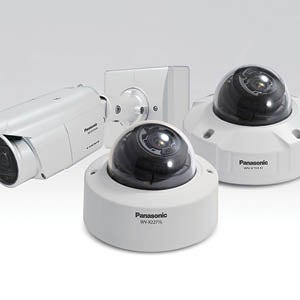
SMART OBSERVATION
i-PRO X-series cameras employ an artificial intelligence engine with on-board analytics, and they optimize video compression to conserve network bandwidth and server storage capacities. Panasonic i-PRO Sensing Solutions Corporation of America

FACE TIME
The NAV Facial Recognition Recorder can identify and record up to 10,000 faces. Merit Lilin USA Corp.

YOUR CHOICE
The Tyco Cloudvue Essentials Bullet camera (left) provides infrared illumination, while the Flex 4K Mini-Dome camera (right) offers high image quality. Johnson Controls
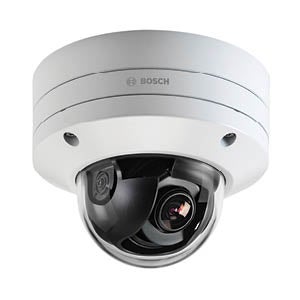
ALWAYS LEARNING
Flexidome IP starlight 8000i cameras feature intelligent video analytics with machine learning-based camera trainer technology to enable the camera to be trained to detect events. Bosch Security and Safety Systems LLC
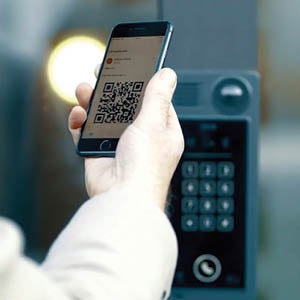
NO TOUCH
Low-touch access control helps minimize common touch points to mitigate the spread of infection, limit external and internal access points, and control and monitor movement within hospitals and other health care facilities. Axis Communications




